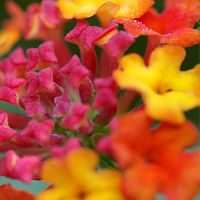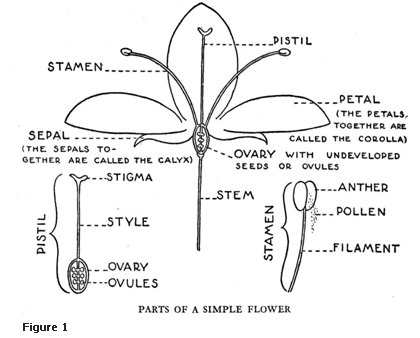My Cart
Your Shopping Cart is currently empty. Use Quick Order or Search to quickly add items to your order!

This Forensics for the Biology Laboratory activity, based on our popular “Flowers for Freddy” Forensics Kit, introduces students to flower morphology and gives them an opportunity to identify floral species using a dichotomous key. Correct identification of the floral species will help students determine the location of a recent murder, giving police valuable information as to the identity of the suspect.
Fredrick A. “Fat Freddy” Garbonza, a local crime boss, was found shot dead in a locked service area behind a restaurant. When the sheriff’s deputy arrived, the victim was found on his back, hands placed over his abdomen in a position of repose, like a body in a casket. The lack of blood and the statements of witnesses who heard no gunshots suggest that the crime was committed elsewhere. Several local business owners had keys to the service area because they sold supplies to the restaurant, and several also owed Fat Freddy money.
John Chapman owns an orchard and supplies the restaurant with fresh fruits. Thomas Ato grows and supplies fresh vegetables. Carl VonLinne runs a greenhouse/flower shop and supplies centerpieces.
A crime scene investigator found a number of flowers under the victim and in his clothing, collected them, and placed them in a liquid preservative. Your forensics lab has been asked to examine and identify the flowers and to determine the likely location of Fat Freddy’s shooting death, in the hopes that this information will implicate one of the suspects.
 Before students can work with the dichotomous key, they need to know the names of the parts of the flower (see Fig. 1). Basic flower parts include:
Before students can work with the dichotomous key, they need to know the names of the parts of the flower (see Fig. 1). Basic flower parts include:
Many students have difficulty understanding how to use a dichotomous key. If your students have not previously used keys, consider beginning with the following exercise:

This key is designed for use by people with little botanical training. It was developed to help students identify the type of preserved flowers provided in the "Flowers for Freddy" Forensics Kit. Here is an excerpt:
| 1. | The “flower” is actually a tight cluster of many small flowers (a head or spadix) | go to 2 | ||||||
| 1. | The flowers are single, or loosely associated together (i.e., umbels or cymes) | go to 5 | ||||||
| 2. | The flowers are surrounded by 4 large, showy bracts | Cornus | ||||||
| 2. | The flowers are not surrounded by 4 large, showy bracts | 3 | ||||||
| 3. | The flowers form a finger-shaped spadix | Arisaema | ||||||
| 3. | The flowers form a tight disk (a head) | go to 4 | ||||||
| 4. | All the flowers look the same, although some may be more mature than others; | Taraxacum | ||||||
| 4. | There are 2 distinct types of flowers, the outer ones with a much larger single petal | Chrysanthemum | ||||||
| 5. | The flowers lack petals (wind pollinated) | 6 | ||||||
| 5. | The flowers have petals (animal pollinated) | 8 | ||||||
| 6. | The flowers are perfect, containing both stamens and pistils | Avena | ||||||
| 6. | The flowers are not perfect; each contains either stamens or pistils | 7 | ||||||
| 7. | The bract of each flower is spiky | Carya | ||||||
| 7. | The bract of each flower is rounded | Quercus | ||||||